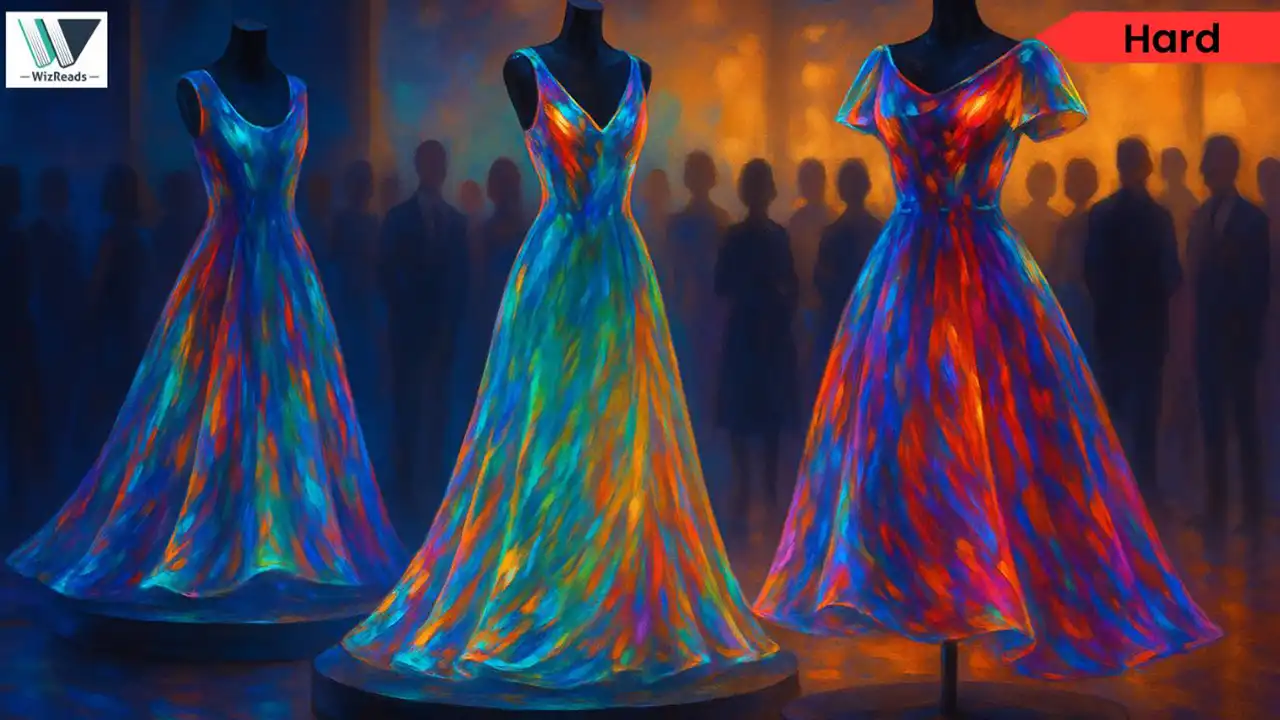
Newsletter Subscribe
Enter your email address below and subscribe to our newsletter

Enter your email address below and subscribe to our newsletter

Can fashion made from glass ever be more than a fragile spectacle designed to shatter our assumptions about wearability? When designers choose materials that threaten to break at the slightest touch, are they making profound statements about vulnerability and power, or simply creating impractical art pieces? These hard to read RC passages explore the complex intersection where aesthetic innovation meets material limitations, challenging readers to distinguish between genuine cultural commentary and elaborate publicity stunts in the world of experimental fashion.
Read these RC passage(s) in Social Sciences and answer the question(s) that follows. You can choose the GMAT style Reading Passage and the question or the GRE RC variant and answer the GRE-style question. Even better, you could solve both.
Glass fashion constitutes a specialized design discipline wherein crystalline materials serve as primary structural or ornamental components within wearable constructions. Encompassing three methodological approaches – spun-glass textile fabrication utilizing microscopic filaments, integrative designs embedding transparent elements within conventional substrates, and monolithic sculptural garments comprising entirely glass-based construction, glass fashion occupies the conceptual territory between decorative arts and functional apparel. The trend necessitates reconceptualization of established design hierarchies while challenging conventional assumptions regarding aesthetic expression and practical utility.
The inherent optical properties of glass-based garments generate distinctive sensory experiences through sophisticated light-manipulation phenomena unavailable within conventional fashion materials, producing spectral transformations and luminous effects that respond dynamically to movement and environmental illumination. Contemporary practitioners exploit these characteristics to construct garments functioning as kinetic visual installations, wherein the wearer becomes an active participant in ephemeral optical performances. This approach positions glass fashion as both artistic intervention and theoretical commentary on fashion’s engagement with spectacle, temporality, and contested boundaries between performative art and commercial design.
Conversely, the material advantages of glass construction create substantial practical limitations that severely constrain commercial application and quotidian functionality. The fundamental brittleness of glass components renders such garments exceptionally vulnerable to structural failure under routine wear conditions, demanding specialized preservation protocols that preclude casual use. Moreover, the considerable weight and inflexible nature of glass elements compromise ergonomic considerations, thereby restricting their application primarily to ceremonial contexts, artistic demonstrations, or curatorial exhibitions rather than practical wardrobes.
Based on the passage, which of the following can most reasonably be inferred about contemporary practitioners of glass fashion?
The passage states that practitioners “exploit these characteristics to construct garments functioning as kinetic visual installations” while simultaneously acknowledging that glass fashion creates “substantial practical limitations that severely constrain commercial application.” This indicates practitioners are deliberately utilizing material properties (optical effects) that they know will inherently limit practical use, suggesting they prioritize artistic impact over functional wearability.
Correct Answer: Choice (E)

The proliferation of glass-based garments in contemporary fashion discourse reflects a profound cultural preoccupation with the paradoxical relationship between vulnerability and authority. Cultural theorists posit that glass fashion serves as a sartorial manifestation of society’s complex negotiation with fragility as a form of empowerment—wherein transparency and brittleness become emblematic of authenticity and courage rather than weakness. The deliberate adoption of materials that threaten structural integrity mirrors broader cultural anxieties about exposing one’s vulnerabilities while simultaneously asserting dominance through the very act of such exposure. Critics, however, dismiss this interpretation as overwrought theorizing, arguing that glass fashion represents nothing more than ephemeral shock couture designed to generate publicity through calculated impracticality.
Yet this reductive assessment fails to account for the consistent symbolic deployment of vitreous materials across diverse cultural contexts throughout history. From ancient ceremonial vestments incorporating glass beads to contemporary avant-garde collections, designers have persistently gravitated toward materials that embody the tension between strength and fragility. The deliberate choice to circumvent durable alternatives in favor of precarious construction suggests an intentional commentary on the performative nature of power itself—particularly in societies where displays of invulnerability often mask underlying insecurities.
In the passage, “reductive” most nearly means:
In context, “reductive assessment” refers to the critics’ interpretation that dismisses the complex cultural theory in favor of a simpler explanation (shock couture for publicity). “Reductive” here means oversimplified—reducing a multifaceted phenomenon to overly basic terms, which fails to account for the “consistent symbolic deployment” the author then describes.
Correct Answer: Option (B).